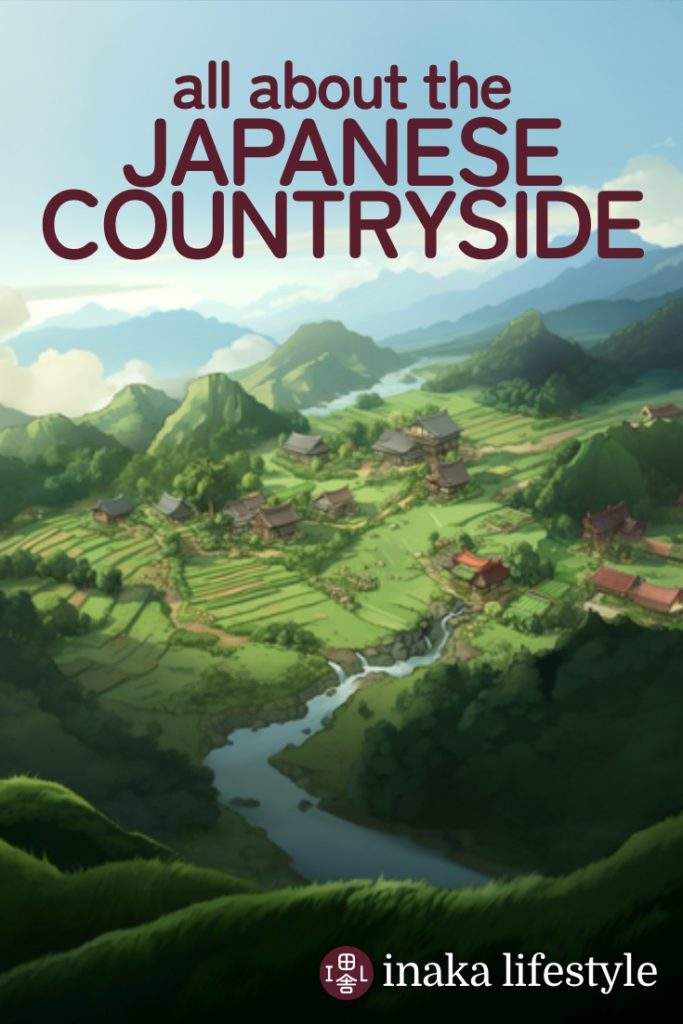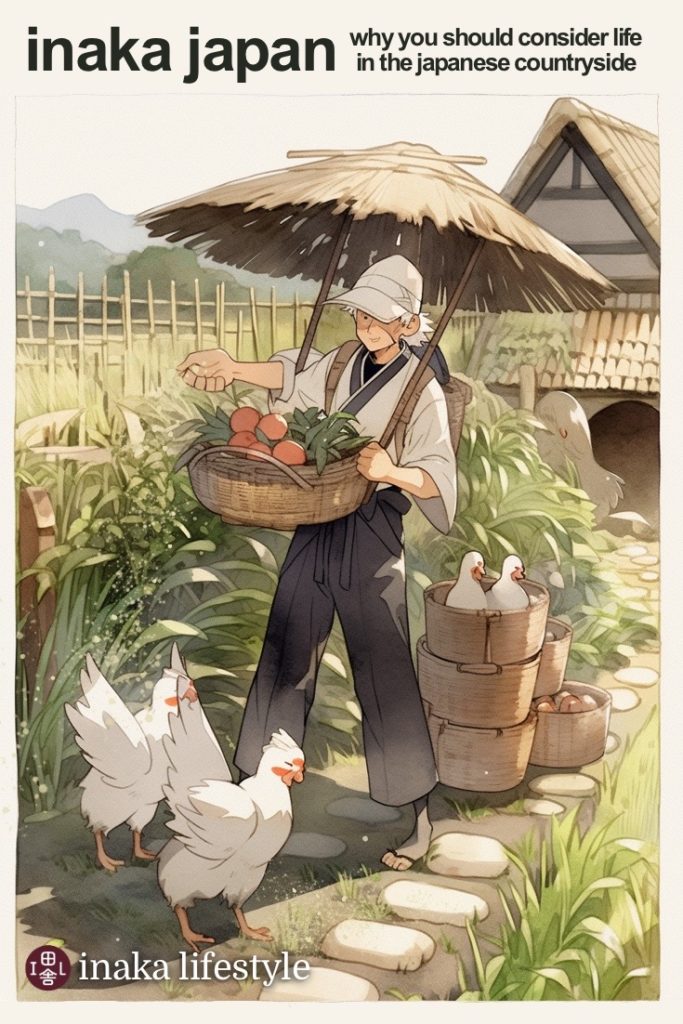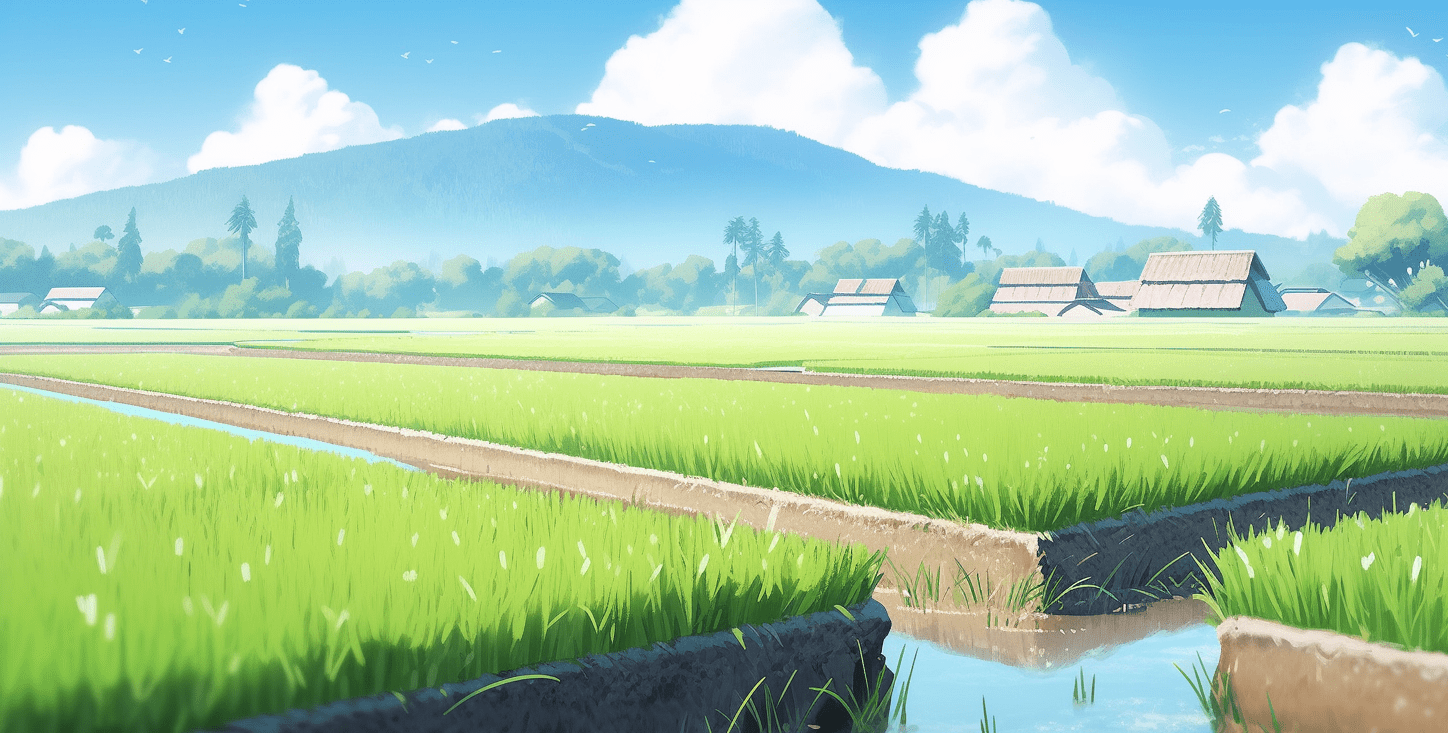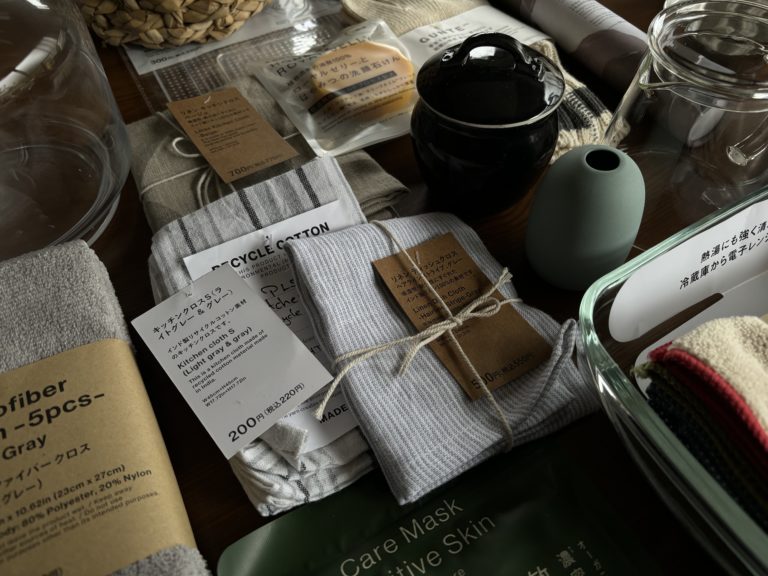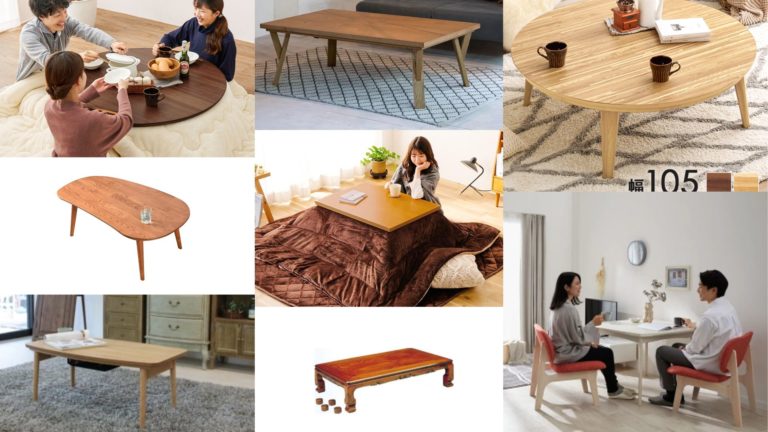What is the meaning of inaka?
Inaka meaning: (田舎) a Japanese word meaning “countryside” or “rural area” in English. It refers to regions outside of major cities and urban centers, typically characterized by a more agricultural or natural environment. The term is used to describe areas with smaller populations, fewer amenities, and a slower-paced lifestyle compared to urban areas. The word inaka often conjures up images of picturesque landscapes, traditional customs, and a sense of tranquility.
Why Is Inaka Japan Trending?
There are many reasons why people are talking about the Japanese countryside. Here are a few factors:
Rural Revitalization Efforts
In recent years, there has been increased attention on revitalizing rural areas in Japan. The government, local communities, and organizations have implemented various initiatives to address issues such as depopulation, aging populations, and economic decline in the countryside. Some of these efforts have made headlines and caused many urban dwellers to pause and contemplate rural lifestyles.
For example, the kyoryokutai program sponsors motivated individuals to pursue revitalization in Japan’s inaka areas.
Read more Japan-Forward.com: Revitalizing Old Communities with New Life: Japan’s Chiiki Okoshi Kyōryokutai
Alternative Lifestyle Choices
The inaka means an alternative lifestyle choice for individuals seeking a slower pace of life, closer connection to nature, and a sense of community. As urban areas can be crowded and fast-paced, some people are drawn to the tranquility, natural beauty, and cultural richness offered by rural areas.
The COVID pandemic also provoked many people to reassess their life direction. This was due to increased reflection and a shift in perspective. The world experienced changes in work-life balance (for better and worse). The increased exposure to mortality of friends and family provoked a desire for change and meaning. There was job loss and uncertainty, and a longing for a simpler and more meaningful life.
As Japan remains a popular pipe dream for people around the world, it makes sense that a peaceful, natural setting in the Japanese countryside would experience revitalized interest.
Sustainable Living and Eco-Tourism in Japan
The countryside often embodies sustainable living practices and offers opportunities for eco-tourism. People interested in sustainable agriculture, organic farming, eco-friendly living, or experiencing nature firsthand may discuss or explore the inaka as a way to engage with these concepts.
Ozu, Ehime was named as one of the “Top 100 Sustainable Tourism Destinations in the World in 2023” by Green Destinations, an international official certification body and non-profit organization. Sometimes called the “Little Kyoto” of the Iyo region, Ozu has seen several noteworthy revitalization efforts including adaptive renovations that turn old traditional folk houses into hotels, cafes and shops.
Escape From Urban Life
For some, discussions about the Japanese countryside may revolve around the desire to escape the stresses of urban life. The inaka provides a respite from the hustle and bustle of cities, allowing individuals to immerse themselves in a more relaxed and serene landscape.
Cultural Exploration
The inaka offers a chance to explore and experience traditional Japanese culture, customs, and festivals that are deeply rooted in rural communities. People interested in immersing themselves in authentic cultural practices, local cuisine, and traditional arts and crafts may find that the inaka is the most authentic place to engage with the Real Japan.
Travel and Tourism
The Japanese countryside has become increasingly popular among domestic and international tourists seeking authentic travel experiences. As social media has become saturated with all the well-worn tourist destinations, the allure of “off-the-beaten-path” travel becomes even more appealing.
Inaka YouTube
Cheap houses in the Japanese countryside tend to wade in and out of the media attention. Sometimes referred to as ghost houses or ghost towns, they have sparked the interest of many different kinds of YouTube audiences: those interested in abandoned place exploration, alternative lifestyles, slow living, money saving hacks, and Japanese culture enthusiasts alike.
Foreign J-vloggers often have at least one video on Japan’s countryside. There are channels dedicated to kominka restoration, akiya hunting, and inaka living.
The inaka holds a certain allure for those seeking a different way of life, cultural exploration, or a break from urban environments, contributing to ongoing conversations about rural Japan.
How Much Does It Cost to Live in the Japanese Countryside?
The cost of living will vary greatly depending on your personal expectations and way of living. That being said, the inaka generally has a far more affordable cost of shelter than urban areas in Japan. While some foreign people have criticized high prices of fruit and vegetables, the truth is that if a traditional inaka lifestyle is pursued, you will discover that the financial burden is actually much lower.
If you become a part of a community and live the way that neighbors do, you might find yourself receiving locally grown, harvested, hunted, fished and foraged foods like daikon (Japanese radish), cabbage, mikan (mandarin oranges), shiitake mushrooms, inoshishi (wild boar), fresh fish, onions, and more.
Those who try to maintain western diets and ways of living in the inaka will pay a premium. Those who adapt and partake in a local sharing/exchange culture will do well financially.
Read more → My Cost of Living in Rural Japan
How Do You Move to Inaka Japan?
Here is a recommended set of steps if you are considering moving to the Japanese Countryside:
- Research. Watch videos, read articles and books, listen to podcasts, and talk to others with inaka experiences. Try to hear both the good and the bad. Consider if you can manage tough scenarios and come out in one piece.
- Visit Japan and spend some time in the countryside. You might consider doing a workaway stay, WWOOF, study abroad, a homestay exchange program, or a roadtrip. It might be difficult to get a true sense of a good community fit from initial visits, but it is better to start with a low-commitment visit. The Japanese countryside is not for everyone, and some people can tell right away.
- Organize your visa, which will probably be linked to your employment. The JET program is the highest quality English teacher placement program, which almost exclusively places teachers in the inaka. Applicants may request specific areas, however the placement is not guaranteed. Requesting a countryside location will be a higher likeliness of receiving your placement location (as compared to Tokyo).
During the pandemic, many Japanese employers learned how to make remote work possible. While many employers reverted to in-office work after time, some retained their new flex practices. It is work checking job postings if you are interested in remote office work, however most of these positions will be only available for those fluent in Japanese language.
If your employer does not sponsor your visa, contact your local Japan embassy or consulate for personalized recommendations. - Organize housing. Jumping into home ownership quickly is not recommended. Many foreigners may find that their level of comfort in Japan changes with time, due to highly contrasting core cultural values, social structures, and general challenges of living in a foreign country.
The best-case-scenario is moving into a flexible rental property that is organized by an employer.
Real estate websites and local agents can assist in finding suitable accommodations. Many housing opportunities are not listed online. Homes for rent might be listed in the town paper, or be found through word-of-mouth. - Make the move. Get your affairs in order before leaving your home country. This means organizing your finances, health insurance, doing last minute language and etiquette study, making sure your passport is up to date, get your international drivers permit, cancel subscription services, cancel utilities, do any last-minute medical and dental appointments, organize personal belongings for donation, shipping, luggage, or storage, and get all of your important documents such as birth certificate, academic qualifications, and licenses in order.
Read next → Everything you need to start living in Japan as a foreigner
What Are Good Inaka Japan Travel Destinations?
Japan’s countryside offers a wealth of scenic and culturally rich destinations. Here are some popular travel destinations in the Japanese countryside:
Kanazawa
Located on the Sea of Japan coast, Kanazawa is famous for its well-preserved samurai and geisha districts, as well as Kenrokuen Garden, one of Japan’s most beautiful traditional gardens.
Takayama
This historic town in the Hida region of Gifu Prefecture offers a glimpse into traditional Japanese architecture and culture. Takayama’s old town and annual Takayama Festival are major attractions.
Nikko
Known for its UNESCO World Heritage sites, including Toshogu Shrine and the scenic beauty of Lake Chuzenji and Kegon Falls, Nikko is a popular destination for nature lovers and history enthusiasts.
Shikoku
Japan’s fourth-largest island is home to the 88 Temple Pilgrimage, a famous Buddhist pilgrimage route, and offers beautiful landscapes, rural charm, and hot springs.
Read more → Ehime’s Top Serene Getaway
Iya Valley
Located in Tokushima Prefecture on Shikoku Island, Iya Valley is renowned for its scenic landscapes, traditional thatched-roof houses, and vine bridges.
Yakushima
A subtropical island off the coast of Kyushu, Yakushima is known for its ancient cedar forests, moss-covered trails, and being the inspiration for the animated film “Princess Mononoke.”
Shirakawa-go and Gokayama
These historic villages in the mountains of Gifu and Toyama Prefectures are famous for their traditional gassho-zukuri farmhouses, some of which are UNESCO World Heritage sites.
Hokkaido
Japan’s northernmost island, Hokkaido, is known for its stunning landscapes, hot springs, and outdoor activities. Places like Furano, Biei, and Shiretoko National Park are popular destinations.
These are just a few examples, and Japan’s countryside has numerous other destinations worth exploring. Each region offers its unique charms, from picturesque landscapes and cultural heritage to outdoor adventures and relaxation in hot springs.
Who lives in the Japanese countryside?
In Japan, the inaka is typically populated by a mix of different demographics. Here are some groups of people who commonly live in the inaka:
Older People
In many rural areas, the majority of residents are older individuals. As younger generations tend to migrate to larger cities in search of more desirable job opportunities, the aging population remains in the countryside, often maintaining traditional lifestyles. Don’t be fooled. Japan boasts a high rate of centenarians. Grandmas and Grandpas often follow the diet and exercise recommendations of doctors well, meaning they stay sprite and energetic for a long time! You might just discover that Japanese Grandmas and Grandpas can hike faster, drink more, and accomplish more than you can.
Farmers and Agricultural Workers
The inaka is home to many farmers and agricultural workers who cultivate crops, raise livestock, and engage in other agricultural activities. These individuals often have strong connections to the land and play a vital role in sustaining rural communities.
Local Residents
People who have lived in the countryside for generations form the core of the local population. They include families, individuals, and small business owners who contribute to the community’s social fabric and economy.
Commuters
Some individuals choose to live in the inaka while working in cities. These commuters appreciate the quieter lifestyle and natural environment of the countryside while taking advantage of employment opportunities in urban areas. They might maintain hobby hatake (garden plots).
Artists and Creative Professionals
The tranquil atmosphere and scenic landscapes of the countryside attract artists, writers, photographers, and other creative individuals seeking inspiration. Some opt to live in the inaka to immerse themselves in nature and pursue their artistic endeavors. Many find that the low price of housing allows them to pursue what may be a profession with less income security. Some of these people also adopt restoration of akiya and old folk homes as a part of their creative, alternative lifestyle. Housing for creatives may be permanent, seasonal, or as a part of a retreat program.
Retirees and Second-Home Owners
Some Japanese retirees opt to move to the countryside. Some people also own second homes in rural areas as vacation retreats or weekend getaways. While foreigners are able to own homes in Japan without a long-term visa, retirement does not guarantee long-term admissions. Please utilize a legal consultant to understand your options.
It’s worth noting that these are general categories, and the population of each inaka location can vary. Some areas may have a more diverse mix of residents, while others may have a predominantly homogenous population.
Do Foreigners Live in Inaka Japan?
Yes, foreigners do sometimes live in the inaka (countryside) in Japan. While the majority of foreign residents in Japan are concentrated in urban areas, there is a growing number of foreigners who choose to live in rural regions for various reasons. Here are a few groups of foreigners who may live in the inaka:
English Teachers
Many foreign English teachers, particularly those working in the Japan Exchange and Teaching (JET) Program, are placed in rural areas as English instructors in local schools. They often reside in the inaka for the duration of their teaching contracts.
Expat Families
Some expatriate families, often due to job transfers or personal preferences, choose to live in the countryside. This can include individuals working for international companies, foreign diplomats, or professionals in various fields.
Homestay and Exchange Program Participants
Foreign participants in homestay programs, such as language exchanges, cultural exchanges, or agricultural experiences, may temporarily live with host families in rural areas to immerse themselves in Japanese culture and lifestyle.
Foreign Spouses
Perhaps having met during college, travel, or otherwise, foreign spouses dot the inaka. Foreign spouses often face challenges obtaining or succeeding in Japanese workplace culture, so they often become entrepreneurs and small business owners.
While the number of foreigners living in the inaka may be relatively smaller compared to urban areas, their presence contributes to the diversity and cultural exchange within rural communities. It’s important to note that living in the countryside as a foreigner may present some unique challenges, including language barriers and limited access to certain services. However, many find the experience rewarding and fulfilling, embracing the local culture and becoming active members of their communities.
What Kinds of Jobs Can Foreigners Do if They Want to Live in the Inaka?
Foreigners living in the inaka (countryside) in Japan may have various job opportunities depending on their skills, qualifications, and the specific needs of the region. Here are some examples of jobs that foreigners can consider in the inaka:
English Teaching
Teaching English is a common job for foreigners in Japan, including in rural areas. Opportunities exist in public schools, private language schools, and community centers. The Japan Exchange and Teaching (JET) Program is a popular option for English teaching positions in rural regions.
Agricultural Work
The inaka often has a strong agricultural sector, and foreigners interested in farming or working in related industries may find opportunities in areas such as organic farming, winemaking, tea production, or animal husbandry.
Hospitality and Tourism
With the growing interest in rural tourism, there may be job openings in guesthouses, traditional ryokans, farm stays, and local tourism offices. Foreigners with hospitality or customer service experience can find opportunities in these sectors.
Outdoor and Adventure Activities
If you have skills or qualifications related to outdoor activities such as hiking, mountaineering, fishing, or guiding, there may be possibilities to work in adventure tourism or outdoor education programs in rural areas.
Arts and Crafts
The inaka can be a hub for traditional arts and crafts. Foreigners with artistic skills or knowledge of traditional crafts like pottery, woodworking, or textile arts may find opportunities to collaborate with local artisans, set up their own studios, or participate in artist-in-residence programs.
International Business
Some rural areas have business opportunities that may benefit from international connections or expertise. This could include import/export, international consulting, or assisting local businesses in expanding their reach beyond Japan.
Remote Work
With the increasing popularity of remote work, individuals with jobs that allow telecommuting or freelancing can choose to live in the inaka while maintaining their current employment. This option provides flexibility and the ability to enjoy the rural lifestyle.
It’s important to note that language skills, particularly Japanese proficiency, can be beneficial for many job opportunities in the inaka. However, some positions may have more relaxed language requirements, especially in sectors where international interaction is common. Networking, researching local industries, and reaching out to relevant organizations or communities in the desired area can help uncover job opportunities in the inaka.
What Do I Need to Know Before Visiting the Inaka?
Before visiting the inaka (countryside) in Japan, it’s helpful to be aware of a few important things to ensure a smooth and enjoyable experience. Here are some key points to know:
Research the Destination
Conduct thorough research about the specific region you plan to visit in the inaka. Learn about its geography, climate, local customs, attractions, and any unique considerations or events happening during your visit.
Language
While English may be less commonly spoken in rural areas, especially among older generations, learning some basic Japanese phrases and expressions will greatly enhance your communication and interaction with locals. Prepare translation apps to facilitate communication. Google translate allows you to download languages over wifi ahead of time incase you run out of data or are in a low-service area. Learning to speak and understand will always be more useful, as some Japanese grandparents may have never seen a translation app before and may get confused.
Transportation
Public transportation options in the inaka may be limited compared to major cities. Check the availability and schedules of trains, buses, or rental car services in the area. It’s advisable to have a plan for getting around, especially if you want to explore multiple locations. Obtain an international drivers permit before leaving your home country. Car rentals need to be reserved in advance.
Accommodation
Check the availability of accommodation options in the area, including guesthouses, hostels, ryokans (traditional Japanese inns), minshukus (family-run guesthouses), or farm stays. Book in advance, especially during peak travel seasons, to secure your preferred lodging.
Local Customs and Etiquette
Familiarize yourself with Japanese customs and etiquette, such as removing shoes when entering homes or certain establishments, using appropriate greetings and bows, and showing respect for local traditions. Being aware of and practicing these customs demonstrates cultural sensitivity. They are the tip of the iceberg of Japanese cultural expectations, so it is imperative that the simple practices are followed. Adopting more complex and locally-specific practices will be expected with longer stays. Kindness, smiles and apologies go a long way. Depending on the community, some places may be accommodating to foreigners and some places will not.
Cash and ATMs
In rural areas, cash is still widely used, and credit card acceptance may be limited. Ensure you have enough cash on hand, and locate ATMs or nearby banks in advance to avoid any inconvenience. When possible, paying with exact change is polite.
Food Preferences and Allergies
If you have dietary restrictions or allergies, it’s helpful to learn about local cuisine and ingredients beforehand. Communicate your dietary needs clearly when ordering food or participating in homestays to ensure your requirements can be accommodated. Vegetarianism is possible to accommodate, but it may require additional planning and flexibility.
Dress Appropriately
Consider the weather and local customs when deciding what to wear. Respectful attire is appreciated when visiting shrines, temples, work, school, or traditional events. Pack comfortable shoes and clothing suitable for outdoor activities if you plan to explore nature trails or engage in agricultural experiences. Modest, simple clothing is recommended.
Respect Nature and the Environment
When visiting natural areas, follow designated trails, respect wildlife, and leave no trace. Be mindful of local regulations, such as proper waste disposal or recycling practices.
Safety Precautions
While Japan is generally a safe country, it’s important to practice common safety precautions. Inform someone about your travel plans, carry necessary identification, and be mindful of your belongings.
By being well-prepared and culturally sensitive, you can enhance your inaka experience and create positive, cherished memories in rural Japan.
Japanese Countryside Expectations vs. Reality
Expectations and reality in the Japanese countryside (inaka) can sometimes differ due to various factors. Here are a few examples of common expectations versus the reality you may encounter:
Expectation: Peaceful and Serene Environment With Pristine Nature
Reality: While the countryside offers beautiful landscapes and a quieter atmosphere, it’s important to note that rural areas also have their share of noise, agricultural activities, and occasional seasonal events that may disrupt the tranquility. Rural Japanese houses are sometimes built close to one another, so indoor noise pollution is common.
Mountains, rivers, seaside views and rice fields are a lovely sight. But Japan also has a high amount of pesticide and plastic use in agriculture. Trash burning is a common sight, and many beaches could benefit from regular trash clean-ups.
Expectation: Close-Knit and Welcoming Community
Reality: Rural communities in Japan often have a strong sense of community and may be welcoming to outsiders. However, building relationships and integrating into the community may take time and effort, as cultural differences and language barriers can exist.
Rural areas rarely see foreign visitors. Sometimes local inaka residents have little understanding of what to expect and how to be respectful towards people from diverse home countries. Foreigners may find that they make unforgivable mistakes, their values clash with those of their community, or they generally don’t “fit in.”
Expectation: Lower Cost of Living
Reality: Generally, living costs in the countryside can be lower compared to major cities in Japan. However, this may not be the case for those unwilling to adapt to local norms. This might mean eating local foods, experiencing extremes of heat and cold in an old house, and having fewer modern conveniences.
Expectation: Slower Pace of Life and Less Stress
Reality: The countryside offers a more relaxed lifestyle compared to bustling urban areas. However, it’s important to recognize that rural life can also have its challenges, such as limited access to certain services, fewer entertainment options, and potential isolation, which may not suit everyone’s preferences.
While the highest stress Japanese work environments are usually in urban areas, there is still a great deal of pressure and obligation culture in the countryside. Teamwork is king. Those who offend or disrupt the social organization expectations may be pressured to change their ways. Depending on the situation and your personality, countryside culture can be high stress, especially if Japanese language skills are low.
Expectation: Abundance of Traditional Culture and Customs
Reality: Rural areas are often associated with preserving traditional culture and customs. While many aspects of traditional Japanese culture may be present in the countryside, it’s essential to understand that modernization and globalization have also influenced these areas, leading to a blend of traditional and contemporary elements. Some traditions and practices have become extinct or nearly extinct.
Expectation: Limited Job Opportunities and Career Options
Reality: Job opportunities in the inaka may be more limited compared to urban areas. While certain sectors like agriculture, hospitality, or teaching English may be prevalent, finding employment in specific industries or highly specialized fields can be more challenging. Remote work or creating your own business may be options to consider.
Even though there may be fewer job opportunities, grant and revitalization programs are available if you are able to navigate the systems using Japanese language.
Are There Alternative Ways to Have an Inaka Experience Without Moving There?
Yes, there are alternative ways to have an inaka experience in Japan if residing in rural areas is not in the cards for you. Here are a few alternatives:
Authentic Homestays
You can find rural accommodations on AirBNB or STAY JAPAN. Plan according to what local amenities are available. It might be necessary to cook your own meals.
Farm-To-Table Restaurants
Seek out restaurants or cafes that focus on serving locally sourced, farm-fresh ingredients. These establishments often aim to create an inaka ambiance and provide a taste of rural cuisine and hospitality.
Traditional Craft Workshops
Participate in traditional craft workshops that teach rural crafts such as pottery, woodworking, indigo dying or paper-making. Many urban areas have workshops and studios where you can learn these skills and experience the craftsmanship associated with the countryside.
Community-Supported Agriculture (CSA) Programs
Join a CSA program that allows you to receive regular deliveries of fresh produce directly from local farms. Some programs offer newsletters or events that provide insights into rural farming practices and connect you with the agricultural community.
Nature Retreats and Camps
Attend nature retreats or camps that focus on outdoor activities, mindfulness, and reconnecting with nature. These programs often take place in natural settings outside of urban areas and can provide a sense of the tranquility and rejuvenation associated with the inaka.
Cultural Exchange Programs
Engage in cultural exchange programs that connect you with individuals from rural communities. This can include language exchange programs, pen-pal initiatives, or virtual cultural exchanges, allowing you to learn about rural life through personal interactions and conversations.
Documentaries and Literature
Watch documentaries or read literature that explores the life and culture of rural Japan. These resources can provide insights into the inaka experience, traditions, and the relationship between people and nature in rural communities.
While these alternatives may not provide the exact same experience as being in the inaka itself, they can still offer glimpses into rural life, traditions, and values. Embracing these opportunities can help you appreciate and understand the beauty and uniqueness of the Japanese countryside.
True Inaka Meaning
The allure of Japan’s inaka, or countryside, continues to captivate as individuals seek an escape from urban stressors. With rural revitalization initiatives gaining momentum, the Japanese government aims to address depopulation and economic decline, sparking interest in alternative lifestyles. For those contemplating a move, understanding the demographics in the inaka will be a core skill for a good rural life.
Like This Article About the True Meaning of the Inaka? Pin It!
